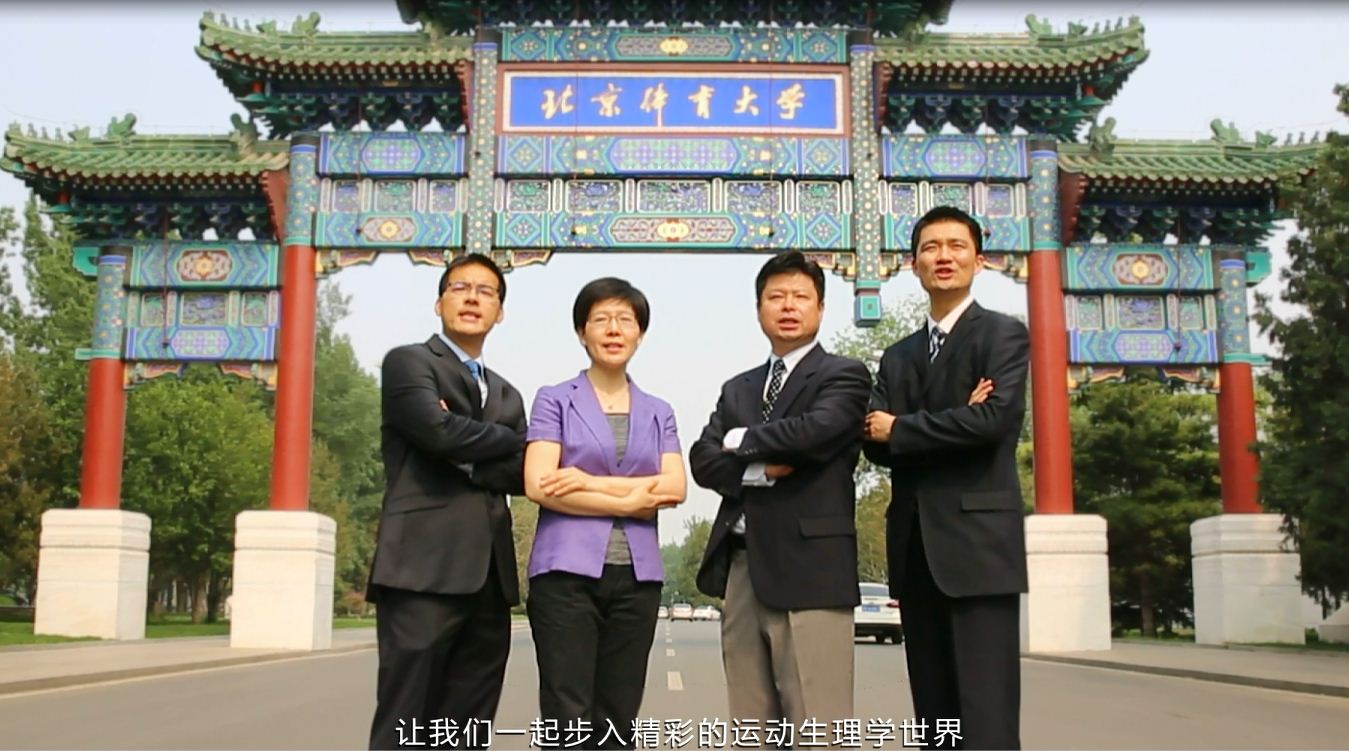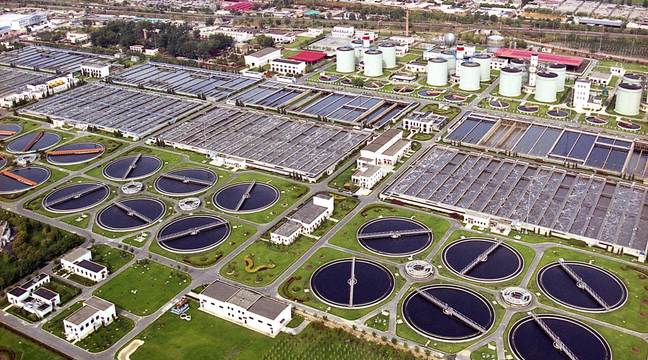
当前课程知识点:Water and Wastewater Treatment Engineering: Biochemical Technology > Chapter 4 Other aerobic biological wastewater treatment process > Section 4.3 SBR process > Section 4.3 SBR process
返回《Water and Wastewater Treatment Engineering: Biochemical Technology》慕课在线视频课程列表
返回《Water and Wastewater Treatment Engineering: Biochemical Technology》慕课在线视频列表
同学们好,我们来学习第三节,间歇式活性污泥法工艺
间歇式活性污泥法工艺,有的时候也称为序批式间歇反应器工艺
称为SBR工艺,SBR工艺是Sequence Batch Reactor
这节主要的内容是SBR的原理及工艺流程
SBR的计算,以及SBR的主要特征
我们首先来看,SBR的工作原理,SBR的主要的反应器
实际上只有一个曝气池,但是这一个曝气池,同时又兼做沉淀池
所以在这个SBR的运行过程中间
一共从时间顺序上分为五个工序
分别是进水,进水满了,到了最高水位以后,开始曝气,开始进行生化反应
那么随后进入沉淀,沉淀之后进入排水
当排水达到最低水位以后
中间可能还有一个闲置或者是等待的时期
即等待下一个时期或者说下一个周期的开始,那么相当于重新开始进水
所以它是一个曝气池,但是在时间上分成不同的时序
分别有不同的功能
周而复始的一个周期一个周期的运行,对于这一个池子来说
可能它的进水是间歇的,它的排水也是间歇的
在同一个污区厂中间通过设置多组SBR工艺
交替运行,能够确保它的进水连续,它的出水
也尽量做到能够连续,这些图片
展示的是没有进水的时候的一个SBR池,可以从这个池子中间
我们可以看到,它有一个特殊的专门的排水设备,我们称为滗水器
它的任务主要是在曝气沉淀结束之后
能够尽快的快速的把上清液从曝气池中间排出系统
这是一个正在运行的SBR反应池,这里展示的是SBR的工艺流程
我们可以看到,整个流程中间SBR池是它的最主要的一个反应器
废水进入SBR池之前,要经过一定的预处理
首先要经过格栅,经过沉砂池,必要的时候会设置初沉池
但初沉池有的时候也可以不设,随后就进入这个SBR池
再之后没有二沉池,也没有污泥回流的装置
因为SBR池本身能够兼做二沉池,污泥就在SBR池的底部
所以它也无需污泥的回流设备
那么下面我们来介绍SBR的具体的计算方法
它的基本假设是在SBR的几个运行周期中间
只有在曝气时才会发生生化反应
进水、沉淀、排水和闲置等阶段均不会发生生化反应
所以这就是它的计算的一个基本前提,它的基本概念有一个是排水比
所谓的排水比,是在一个周期中间
一次性排出的水占SBR池最大体积或者最高水位时体积的这个比
还有一个基本概念是,运行周期,我们一般呢用T来表示
这个T涵盖刚才说的五个工序
从进水、沉淀、排水、闲置等开始计算在内,是一个T
还有一个概念是曝气时间,我们通常用t来表示
这主要指的是进水之后的曝气时间
这给出的是它的一个污泥负荷的计算公式
我们可以看到,分子是△v乘上Ci
△v实际上是指的在一个周期里面,进入SBR池的污水的总量
分母是Vmax,这也给出了一个SBR池的一个示意图
其中的Vmax是指水位达到最高水位时,SBR池的体积
其中还有一个最低水位
最低水位相对应的,有一个最小的体积Vmin
当体积达到最大Vmax的时候,它相对应的有一个污泥浓度
我们把这个污泥浓度称为X2
所以在这看,污泥负荷的计算公式
分母部分是Vmax乘上X2,乘上曝气时间
由此计算出来的污泥负荷,它的单位是㎏BOD5/kgMLVSS·h
跟我们前面连续流的活性污泥曝气池的计算公式
略有差别的是,它不是每天的污泥负荷
将这个公式做一定的变换,就可以直接求出△v
用△v除以Vmax,就可以得出它的排水比,最后这个公式
给出的是运行周期T的一个计算
它包括进水所需要的时间,曝气所需要的时间
沉淀所需要的时间以及排水所需要的时间,加上最后设置的
或者设定的闲置的时间,有了刚才前面介绍的这些基本的理论公式之后
我们可能在具体计算的时候还需要有一些简单的设置
首先我们来考虑周期T,通常我们建议要取整数
而且所谓的取整数,是要取24的约数,如4h,6h,8h,12h或者24h
第二个是t进水,也就是进水所需要的时间
我们通常在设计的时候,需要设计n组SBR池
交替运行,基本上要保持整体能够连续进水,必要的时候
可以跟曝气同时进行,沉淀所需要的时间通常设为一个小时
排水所需要的时间,通常设为一个小时
而闲置通常可以与排水合并,或者一般设为0.5h
SBR的主要特征,我们看有这样五点
第一是它兼具完全混合式和理想推流式的特点
因为它从时间上来看,它是一种非常理想的推流式的曝气池
但是它在曝气池的反应阶段,又具有典型的完全混合式的特征
第二点是它无需设置二沉池,曝气池因为本身就具有二沉池的功能
因此,它也无需设置污泥回流设备
因此第三个特点是SVI值比较低,污泥易于沉淀
污泥膨胀的现象非常少
第四个是通过运行时序的设计
可以在单一的曝气池内,完成生物脱氮和生物除磷
最后这样的一个工艺,易于实现自动化的控制和运行
好,这一节内容就到这,谢谢
-Section 0.1 Development Status of Wastewater Treatment Process
--Section 0.1 Development Status of Wastewater Treatment Process
-Section 0.2 Typical Processes of Wastewater Biological Treatment
--Section 0.2 Typical Processes of Wastewater Biological Treatment
-Section 1.1 Principles of wastewater aerobic biological treatment
--1.1 Principles of wastewater aerobic biological treatment
-Section 1.2 Principles and determination of wastewater biodegradability
--1.2 Principles and determination of wastewater biodegradability
-Section 1.3 Principles of wastewater anaerobic biological treatment
--Section 1.3.1 Principles of wastewater anaerobic biological treatment(1)
--Section 1.3.2 Principles of wastewater anaerobic biological treatment(2)
-Section 1.4 Principles of wastewater biological nitrogen removal
--Section 1.4 Principles of wastewater biological nitrogen removal
-Section 1.5 Principles of wastewater biological phosphorus removal
--Section 1.5 Principles of wastewater biological phosphorus removal
-Chapter 1 Homework
-Section 2.1 Basic concept of activated sludge process
--Section 2.1.1 Basic concept of activated sludge process
--Section 2.1.2 Basic concept of activated sludge process
-Section 2.2 Growth rule of activated sludge and its application
--Section 2.2 Growth rule of activated sludge and its application
-Section 2.3 Running mode of activated sludge process
--Section 2.3.1 Running mode of activated sludge process(1)
--Section 2.3.2 Running mode of activated sludge process(2)
-Section 2.4 Kinetics of active sludge process
--Section 2.4.1 Kinetics of active sludge process(1)
--Section 2.4.2 Kinetics of active sludge process(2)
--Section 2.4.3 Kinetics of active sludge process(3)
--Research and Development of Kinetic Model of Activated Sludge Process
-Section 2.5 Principle, calculation and equipment of aeration
--Section 2.5.1 Principle, calculation and equipment of aeration(1)
--Section 2.5.2 Principle, calculation and equipment of aeration(2)
-Section 2.6 Designing of activated sludge process
--Section 2.6 Designing of activated sludge process
-Section 2.7 Operation and management of active sludge process
--Section 2.7.1 Operation and management of active sludge process (1)
--Section 2.7.2 Operation and management of active sludge process (2)
-Chapter 2 Homework
-Section 3.1 Basic principle of biofilm
--Section 3.1 Basic principle of biofilm
-Section 3.2 Biofilter process
--Section 3.2.1 Biofilter Process (1)
--Section 3.2.2 Biofilter process (2)
--Section 3.2.3 Biofilter process (3)
-Section 3.3 Biodisk process
-Section 3.4 Biological contact oxidation process
--Section 3.4 Biological contact oxidation process
-Section 3.5 Aerobic biological fluidized bed process
--Section 3.5 Aerobic biological fluidized bed process
-Chapter 3 Homework
-Section 4.1 Oxidation ditch process
--Section 4.1 Oxidation ditch process
-Section 4.2 A-B process
-Section 4.3 SBR process
-Section 4.4 MBR process
-Chapter 4 Homework
-Section 5.1 Overview and characteristics of development of anaerobic biological treatment
--Section 5.1 Overview and characteristics of development of anaerobic biological treatment
-Section 5.2 Anaerobic digester
--Section 5.2 Anaerobic digester
-Section 5.3 Anaerobic contact process and anaerobic filter process
--Section 5.3 Anaerobic contact process and anaerobic filter process
-Section 5.4 UASB process
-Section 5.5 Other anaerobic biological treatment process
--Section 5.5 Other anaerobic biological treatment process
-Section 5.6 Operation management of anaerobic biological treatment process
--Section 5.6 Operation management of anaerobic biological treatment process
-Chapter 5 Homework
-Section 6.1 Introduction
-Section 6.2 Biological nitrogen removal process and technology
--Section 6.2 Biological nitrogen removal process and technology
-Section 6.3 Biological phosphorus removal process and technology
--Section 6.3 Biological phosphorus removal process and technology
-Section 6.4 Simultaneous nitrogen and phosphorus removal process
--Section 6.4 Simultaneous nitrogen and phosphorus removal process
-Chapter 6 Homework
-Section 7 Natural biological treatment process
--Section 7 Natural biological treatment process
-Chapter 7 Homework
-Section 8.1 Source, nature and treatment of sludge
--Section 8.1 Source, nature and treatment of sludge
-Section 8.2 Sludge thickening and digestive stability
--Section 8.2 Sludge thickening and digestive stability
-Section 8.3 Sludge conditioning, dehydration and incineration
--Section 8.3 Sludge conditioning, dehydration and incineration
-Chapter 8 Homework
-Section 9 Wastewater Discharge and Reuse
--Section 9 Wastewater Discharge and Reuse
-Chapter 9 Homework





